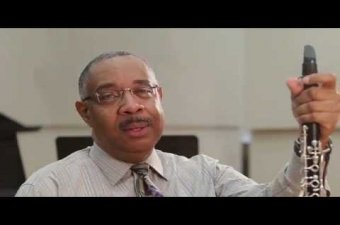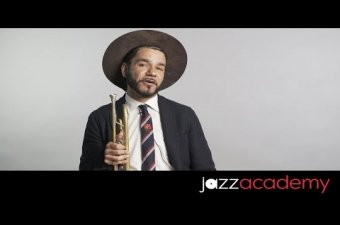Fisk School
401 LoyolaNew Orleans LA 70112
Music at the Abijah Fisk School helped open the ears of two of the most influential figures in traditional jazz, Charles “Buddy” Bolden and Louis Armstrong.
Though Bolden isn’t a household name, his cornet playing earned him posthumous recognition as the progenitor of jazz. He probably began kindergarten at Fisk in 1883 or 1884, when it was for “colored” students only (it had been desegregated during Reconstruction, and re-segregated shortly thereafter). Its wooden desks were engraved with the initials of white children who attended when slavery was still legal.
Bolden would have been lucky to get a seat—when he went to Fisk it was overcrowded with 1,000 boys and girls. The schoolhouse, a square building surrounded by a yard, was subdivided inside with wooden partitions that could move on ropes and pulleys to accommodate the crowd. Fisk principal Arthur P. Williams was known for maintaining a dignified order despite the conditions. (Sylvanie Williams, his wife, oversaw the girls at Fisk before serving as principal elsewhere and becoming a prominent civic activist.)
A.P. Williams came from an elite family of color in Connecticut, and made a name for himself in New Orleans as a singer and pianist as well as an educator and school administrator. At Fisk he staged operettas and singing programs with students, including a well-reviewed production of the Gilbert and Sullivan opera “HMS Pinafore” in 1881. While Bolden’s role in shows like these is unknown, they would have joined the music at churches, dance halls, and parades in the soundscape of his childhood.
In the late 1890s A.P. Williams’ nephews James W. McNeal and Wendell P. McNeal joined the faculty at Fisk. They were musicians in the John Robichaux Orchestra, one of New Orleans’ most popular dance bands at the time (and a rival of the group Bolden had started to lead). James McNeal also played cornet in one the city’s best-loved brass bands, the Onward. After serving as Chief Musician in a military band during the Spanish-American War, he became Vice Principal at Fisk.
Louis Armstrong started kindergarten here in 1907. He lived right across the street and attended class barefoot. The school had subdivided rooms and an annex by then, and accommodated 550 students. At the time the surrounding neighborhood was a vice district known for honky tonks and prostitution, and Armstrong recalled Fisk being stigmatized by association. Still, he remembered the school as integral to the community:
Old Mrs. Martin was the caretaker of the Fisk School, and along with her husband she did a good job. They were loved by everybody in the neighborhood. Their family was a large one and two of the boys turned out to be good and real popular musicians. Henry Martin was the drummer in the famous Kid Ory’s band…
Armstrong had to leave in the fifth grade to take odd jobs to support his family.
When A.P. Williams died in 1920 white newspapers called him “one of the best known negro educators in the South,” and Fisk was renamed for him the following year. Shortly after that the long-neglected building suffered a collapse, and was replaced by two shoddy double cottages. The traditional brass band drummer Lawrence Batiste attended the school when it was called Williams in the 1940s. He was one of the last: the facility was demolished in 1950 to make way for a new city hall.
For more about music education in New Orleans, click here.
Videos

Buddy Bolden and the birth of jazz: an interview with Dr. Michael White.

Trumpeter Ashlin Parker discusses Buddy Bolden, from Jazz at Lincoln Center's Jazz Academy.
Video posted by Jazz at Lincoln Center's Jazz Academy.
Trumpeter Ashlin Parker discusses Buddy Bolden, from Jazz at Lincoln Center's Jazz Academy.

Author Al Kennedy discusses the history of music education in New Orleans, including the Fisk School.
Video by The Ponderosa Stomp.
Author Al Kennedy discusses the history of music education in New Orleans, including the Fisk School.
Images











